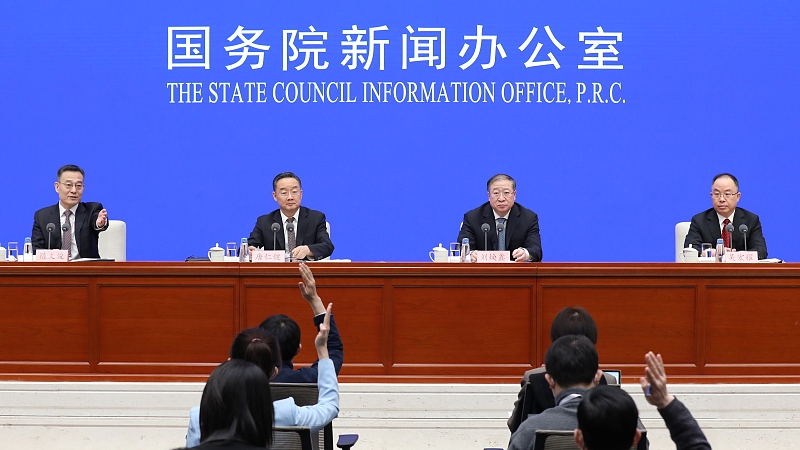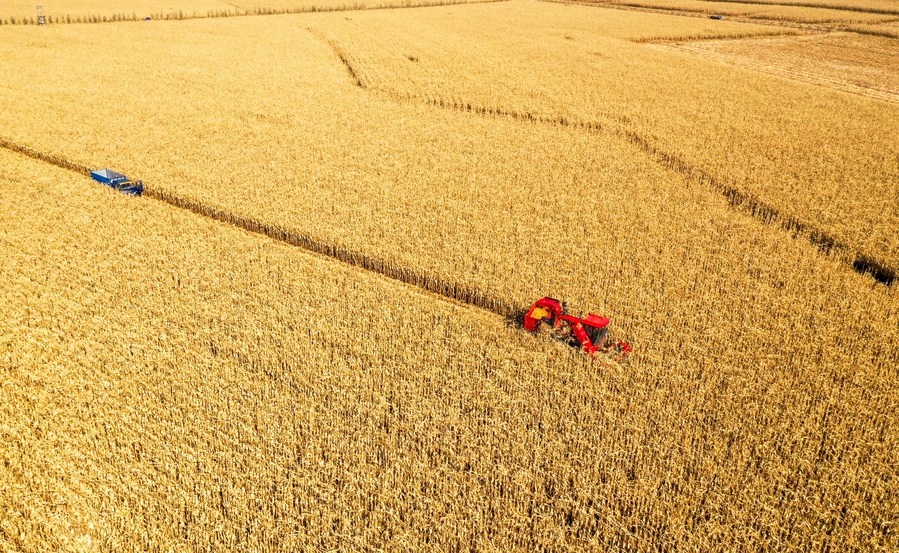
China's State Council Information Office holds a press conferences to introduce the key tasks of comprehensively promoting rural revitalization in 2023, in Beijing, capital of China, February 14, 2023. /CFP
China's State Council Information Office holds a press conferences to introduce the key tasks of comprehensively promoting rural revitalization in 2023, in Beijing, capital of China, February 14, 2023. /CFP
Editor's note: John Gong is a professor at the University of International Business and Economics (UIBE) and vice president for research and strategy at the UIBE-Israel. The article reflects the author's views and not necessarily those of CGTN.
This is the 20th consecutive time that the central government has issued an agricultural policy document, often dubbed as the "No. 1 central document," since it's usually the first central government issued document for the new year. Let’s review the history of the No. 1 central document.
The first such policy document was issued in 1982, which proposed "fixing farm output quotas to each household." This was a landmark reform measures introduced by the late Chinese leader Deng Xiaoping. The next few years saw the introduction of commerce and market to rural communities and the gradual phasing out of the state monopoly over purchases and marketing of grain products. In 2006, the No. 1 central document ushered in the era of the construction of a "socialist new countryside." Subsequent documents highlighted raising agricultural productivity, improving rural infrastructure, agricultural technology development and boosting farmers' incomes.
Starting from 2015, the No. 1 central document entered the new era. New concepts were introduced, such as the new normal, new development philosophy, and supply-side structural reforms.
The concept of rural revitalization, which is still the overarching guideline for today's agricultural policy, was introduced in 2018. Subsequent No. 1 central documents were all surrounding this important theme, but with different emphasis in each year, including but not limited to poverty alleviation and agricultural modernization.

Farmers harvesting corn in Naiman Banner of Tongliao City, north China's Inner Mongolia Autonomous Region, October 13, 2022. /Xinhua
Farmers harvesting corn in Naiman Banner of Tongliao City, north China's Inner Mongolia Autonomous Region, October 13, 2022. /Xinhua
The document issued yesterday carries on the same rural revitalization baton, but with several important new objectives, the most important of which, regards plans to elevate the role of agriculture to be one aspect of a strong nation – the concept of China being an agricultural powerhouse. A strong nation must first be strong in agriculture. According to Tang Renjian, China's agricultural minister, China should not be held hostage to other countries in areas of food security, key agricultural technologies and important aspects of production networks and supply chain networks.
This issue is acute against the backdrop of a more uncertain global geopolitical landscape. The war in Ukraine has caused food and fertilizer prices to skyrocket. In some countries, particularly those relying heavily on food imports, they are undergoing food shortages, harboring on starvation. This is a scenario that's unacceptable to China.
The current global geopolitical environment also starts to see power plays by some countries that impose sanctions on critical technologies against China, such as semiconductor equipment. It's not unfathomable that the same can be done for critical technologies in other sectors, including in agriculture. That's another scenario, which is unacceptable to China.
What this means is that the days of China's food supply, including a sizeable imports component, are limited. Even for some crops, such as soybean, that rely heavily on imports, China will gradually increase its own domestic production. It's also highly likely that China will substantially increase its research and development investment in bio-technology for agricultural applications. The country cannot afford to solely rely on a few Western companies for critical technologies.
The self-reliance in agriculture for such a large population in an overall densely populated country is so essential. China is also the world's industrial factory, famous for its prowess in manufacturing. Yet, this runs against the spirit of the Ricardo economics theory of comparative advantage. Nevertheless we do not have a choice in today's geopolitical environment of intense competition with the United States, which is unilaterally imposed upon China by Washington.
(If you want to contribute and have specific expertise, please contact us at opinions@cgtn.com. Follow @thouse_opinions on Twitter to discover the latest commentaries in the CGTN Opinion Section.)